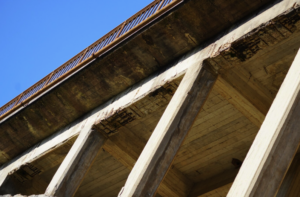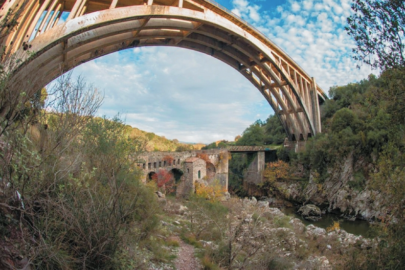The topic of the event concerns the risk of collapse of the bridge of the river Alpheus a few meters after Karytaina and on the national road that connects Arcadia with Ilia in the section between Megalopolis and Andritsaina, as well as the destruction of the historic Byzantine bridge depicted on the pentohiliaro, which is located directly under the dangerous bridge.
At the event, Associate Professor of NTUA Theodosios Tassios will speak on the topic: “Conclusive proposal. For the glory of Arcadia,” while Emeritus Professor of NTUA Manolis Korres, known for his work on the restoration of the Acropolis, will also participate.
The event will take place at the “Leonidas Zervas” Amphitheatre of the National Hellenic Research Foundation, 48 King Constantine Avenue.
Dr. Georgios Adamopoulos, President of the Association of Karytines “Theodoros Kolokotronis” will also speak on the topic: “Pathogens of a new bridge”.
Ioulia Vobiri, architect, “head of the Byzantine Bridge restoration study team” will speak on the topic “Presentation of data from the integrated study of the complete restoration of the Byzantine Bridge of Alpheus in Karytaina”.
The lectures will be followed by a discussion.
A report on the event about the danger of the bridge in Karytaina was made by the Greek ERT Channel.
As stated by the Association in the invitation to the event “in 62 years of operation of the “new bridge” not the slightest maintenance work has been carried out, so that it has now reached a particularly dangerous phase with severe corrosion of its iron reinforcement, posing a potential threat to drivers of cars crossing it and an absolute threat/damage to the underlying Byzantine Monument.
Queen Letizia: With Felipe at the memorial service of the former King Constantine – Photos
Brief background :
“In about 1960, the unfortunate decision was taken by the then Administration to construct a large “new bridge” of reinforced concrete, single span, of large dimensions, directly above the major monument of the Byzantine Bridge of the Alpheus, with a span of 64 meters and a height of about 40 meters, while there was the spatial comfort to build it 50-100 meters further away.

Since then and for 62 consecutive years, no maintenance or protection work has been carried out on the so-called ‘new bridge’ by the public bodies responsible under the law, with the result that it has now reached a particularly dangerous phase, with extensive carbonation of the concrete and severe corrosion of the main iron reinforcement.
This is a potential threat to the users of the bridge and an absolute threat/damage to the underlying Byzantine Monument.
This threat is a major deterrent to the implementation of the major project of restoration of the underlying Byzantine bridge, with provision for the complete reconstruction of the part of the bridge that was blown up during the civil war, by the Ministry of Culture, for which all the necessary studies have been completed and approved by the Central Archaeological Council.
The objective of the event is to answer the question: “What is the most appropriate solution for the ‘new bridge’, among the various alternatives, to definitively address this highly complex problem?”
Ask me anything
Explore related questions





